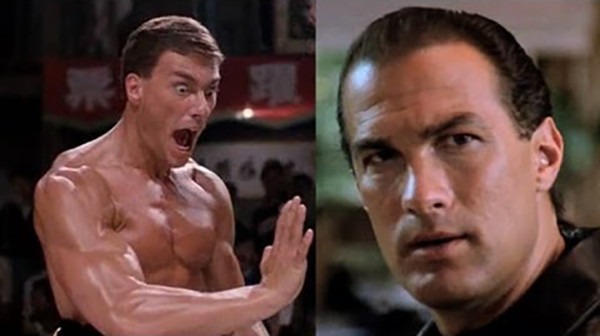Candyman, 1992.
Directed by Bernard Rose.
Starring Tony Todd, Virgina Madsen, Xander Berkley, Vanessa A. Williams and Kesi Lemmons.
SYNOPSIS:
A graduate student in Chicago is completing a thesis into urban legends when she stumbles onto the legend of the “Candyman”, a mysterious entity who is said to brutally murders those who summon him.
In last year’s October Horrors we spotlighted the work of Clive Barker, the British horror author who, while perhaps not as widely known as Stephen King, has been able to craft his own distinctive approach to horror that manages to equal and, in some cases, better his American counterpart. There isn’t much in King’s repertoire can top the sheer awesomeness of Barker’s Nightbreed.
While Hellraiser’s Pinhead is arguably Barker’s most famous creation, there is another demonic figure who looms large over all of them; Candyman.
Based on Barker’s short story The Forbidden, a cursory glance at Candyman’s synopsis might suggest that it’s just another standard supernatural slasher in which an unstoppable killer picks off hapless victims with the main difference being that he has a grisly hook for a hand. Yet, that would be an inaccurate and unfair assumption to make, because, while it does possess some slasher elements Candyman is not a slasher film.
Instead, the film acts as a blending of supernatural and psychological horror with a subtle dose of social commentary thrown in. The film’s primary setting of the Cabrini Green housing projects serves as an avenue for the film examine various issues relating to race and poverty, with the legend of the Candyman serving as a vessel for the inhabitants of the projects to project their anxieties about the misery of their existence onto.
While this blending of horror and social commentary is at times clumsy and rather blatant, such as the rather obvious statement that the police will only take an interest in the projects if a white woman is in trouble, it does add an extra layer of nuance to what could have otherwise been a generic slasher.
I would also argue that Candyman is not a slasher film because, well, there isn’t a whole lot of slashing in it. Much of the violence is off-screen and depicted mainly through the film’s sound design with the viewer and our protagonist left to comprehend the grisly aftermath of the titular killer’s crimes.
Much of the horror comes from trying to figure out whether or not the Candyman is even real with it strongly suggested that it all might in our heroine Helen’s mind that has finally snapped after spending to much time in the world of urban legends. This aspect of the film is where things fall into psychological horror territory, with Helen’s pleas about the Candyman coming across as the rantings of a deranged lunatic and for a moment we start to think that might be the case.
It’s only towards the end that things switch to an explicitly supernatural horror approach as we realise that indeed the Candyman is real and his crimes are in fact a means to ensure that people will spread his legend to maintain his power. This “spreading the fear” approach might seem reminiscent of Freddy Kruger but Candyman’s tragic and cruel backstory as a victim of racist violence lends the character an extra degree of pathos that Freddy lacks.
The film’s setting is also innovative for a horror film with Carbrini Green and its crumbling neglected graffiti-strewn halls lending the film a gritty and realistic feel that is rarely seen in horror films. The housing project almost becoming a character in of itself and one who holds many dark and tragic tales of neglect and poverty within its walls.
The cinematography really brings out the character of this unique setting with its heavy use of shadows that serve to illuminate the graffiti, especially those depicting the title character, his gaping mouth almost acting as a window into his dark underworld. I particularly like the film’s ominous aerial shots, especially one that follows Helen’s car as it drives to the projects, with it the serving to make it look tiny and insignificant.
The visuals are complemented by a suitably spooky score by acclaimed composer Philip Glass whose heavy use of choirs, piano and organ arrangements, along with his trademark minimalist approach of heavy repetition creating a hypnotic, dreamlike yet deeply uncomfortable atmosphere that never lets up. It also helps that I just really love Philip Glass.
Taking on the title role, we have a true horror titan in the form of Tony Todd in a terrifying and captivating performance. Todd, with his bass like voice and towering imposing frame, creates a frightening and yet hypnotic screen presence, his every word luring you ever closer to him you really should be running away. Todd also deserves praise for his dedication to his craft as he bravely performs one particularly unnerving scene while having a mouth full of very angry looking bees.
We also have a terrific performance from Virginia Madsen as protagonist Helen, a character whose arc allows the actress to navigate wildly varying emotions as she transforms from determined academic into a possibly crazed maniac and tragic victim. While her performance is excellent, once Todd appears, Madsen is unfortunately overshadowed by her co-star for much of the rest of the runtime, with her unable to compete with his commanding presence that is impossible to ignore.
With a unique setting, a disturbing atmosphere and a towering terrifying performance from Tony Todd as one of the more underrated horror icons of all time, Candyman is a hypnotic horror experience that doesn’t so much scare you as worm its way under your skin leaving you uncomfortable and disturbed. This is a very different film from your average slasher flick and it’s all the better for it. Check this one out.
Flickering Myth Rating – Film: ★ ★ ★ ★ ★ / Movie: ★ ★ ★ ★ ★
Graeme Robertson


















